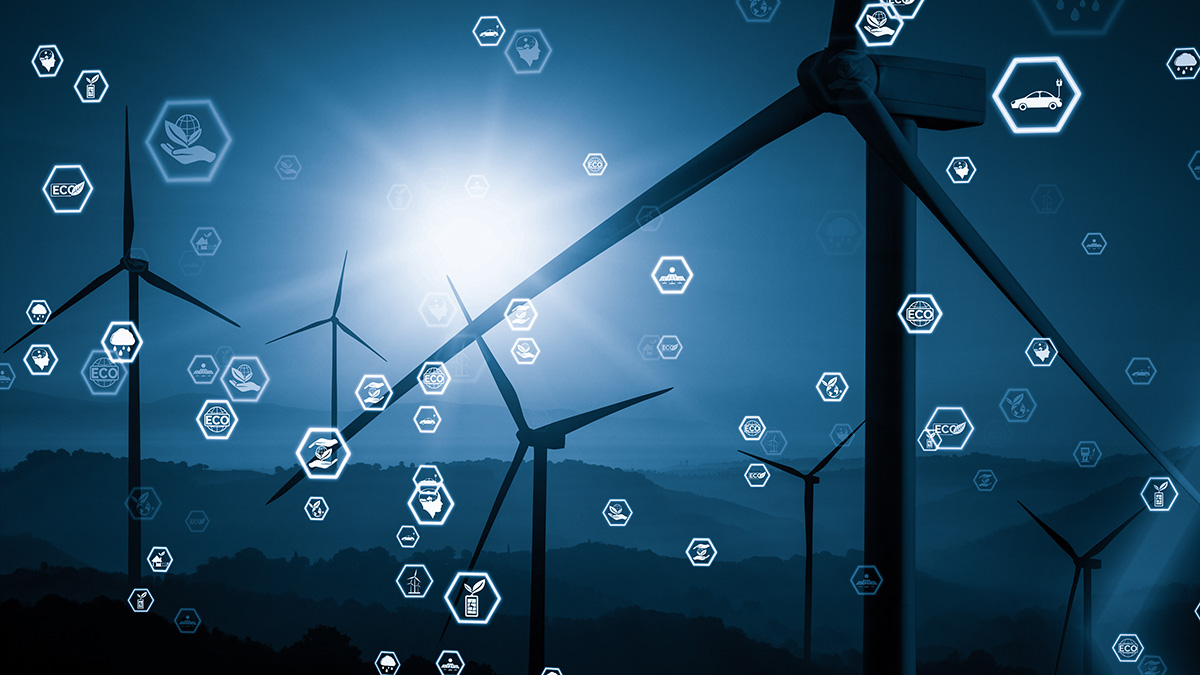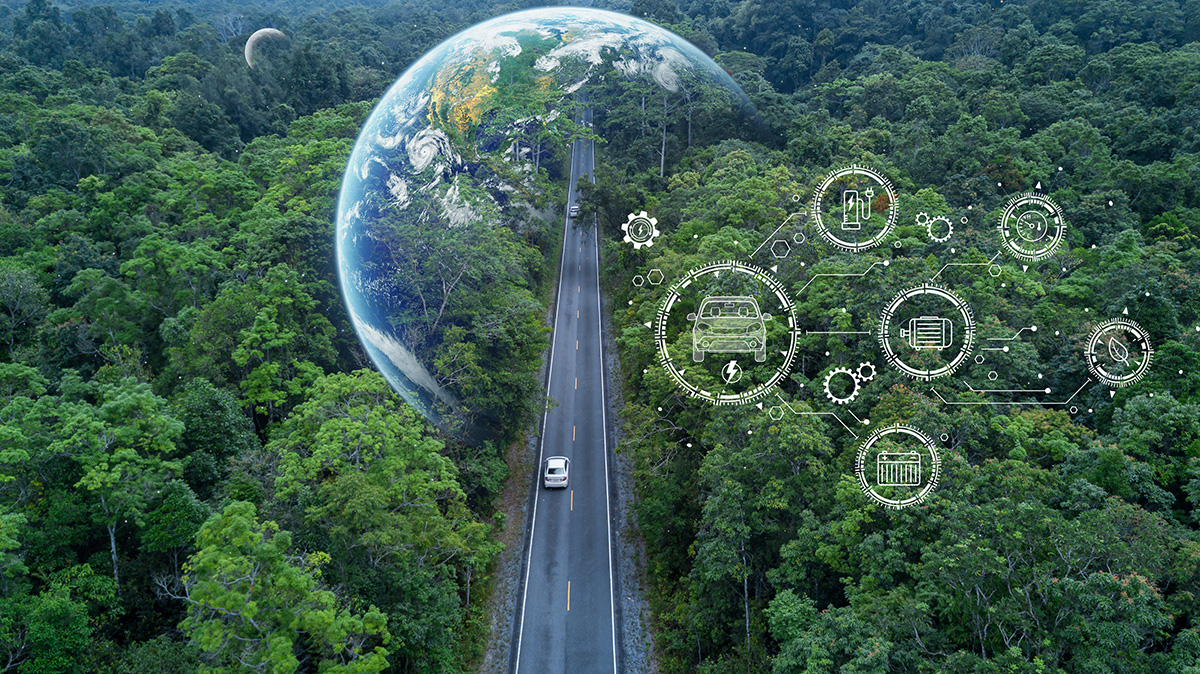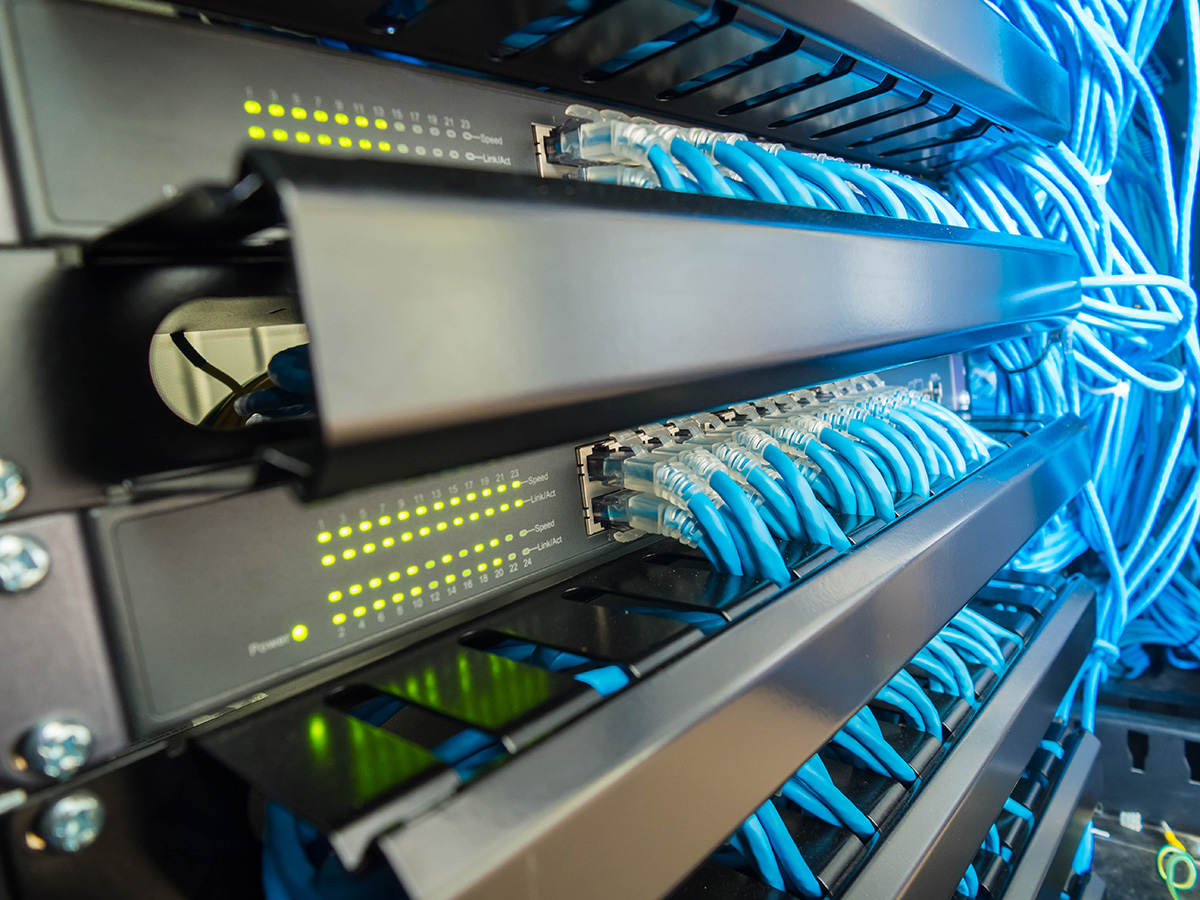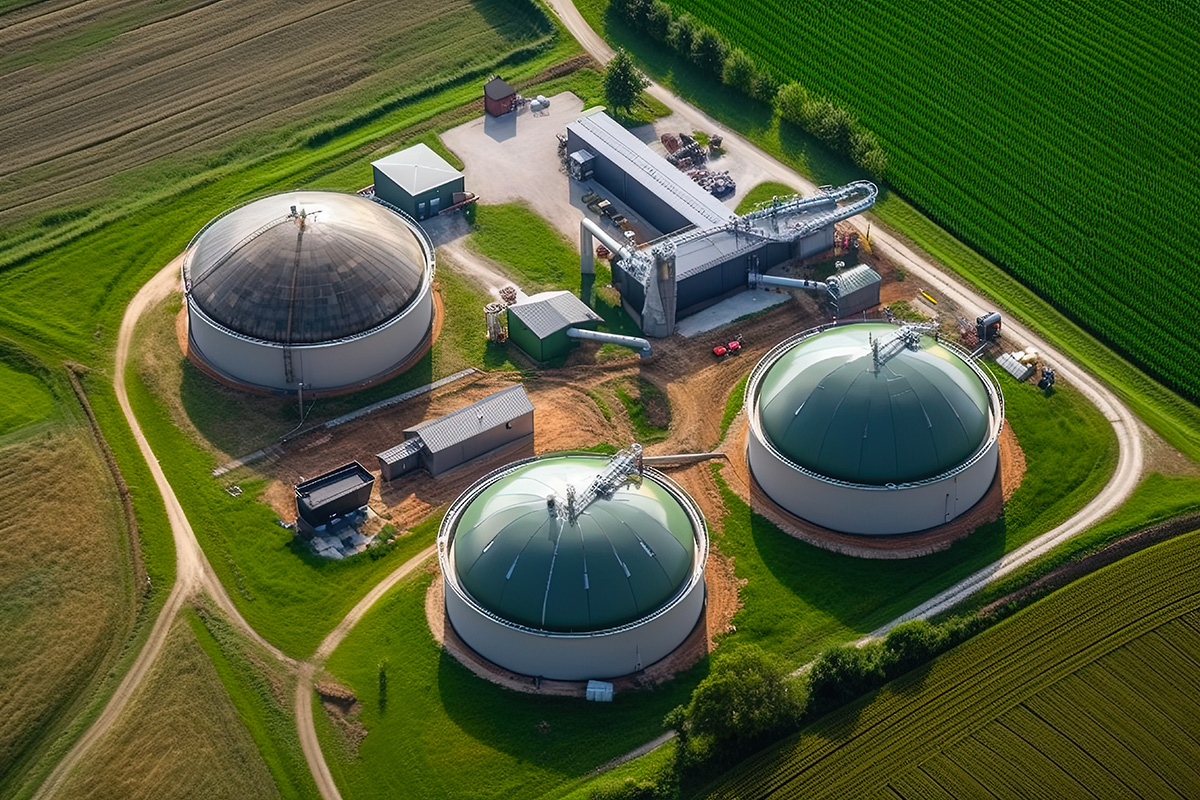Megatrends & Key Infrastructure Themes
Megatrends & Key Infrastructure Themes
The current market environment is characterised by multiple structural megatrends like decarbonisation, connectivity, electrification and aging populations which are triggering strong growth potential and creating attractive investment opportunities for “value-add” infrastructure strategies.
There are currently numerous megatrends unfolding. The real transformational impact (i.e. the actual disruptions risk and growth potential) generated by each megatrend remains a function of: (i) the speed at which the megatrend is unfolding; (ii) its pervasiveness, in term of geographies and activities affected, and finally (iii) its convergence with other megatrends.
Based on this understanding and thanks to its team outstanding track records, Vesper Infrastructure Partners focuses on the following four megatrends and on those target companies that show a direct exposure to the strong growth and return generation potential triggered by such megatrends.
The current market environment is characterised by multiple structural megatrends like decarbonisation, connectivity, electrification and aging populations which are triggering strong growth potential and creating attractive investment opportunities for “value-add” infrastructure strategies.
There are currently numerous megatrends unfolding. The real transformational impact (i.e. the actual disruptions risk and growth potential) generated by each megatrend remains a function of: (i) the speed at which the megatrend is unfolding; (ii) its pervasiveness, in term of geographies and activities affected, and finally (iii) its convergence with other megatrends.
Based on this understanding and thanks to its team outstanding track records, Vesper Infrastructure Partners focuses on the following four megatrends and on those target companies that show a direct exposure to the strong growth and return generation potential triggered by such megatrends.
Decarbonization and Electrification of the Economy
Decarbonisation megatrend is not just limited to increasing the amount of renewable power in the energy mix, but rather, should be considered as a multi-dimensional transformation that will create strong growth potential and investment opportunities in many different segments of new and more complex energy value chains, including: (i) clean tech services for energy efficiency (e.g. smart metering, demand response platforms); (ii) intermittency solutions (e.g. short term battery storage, long term storage solution/clean hydrogen); (iii) clean tech solutions for the decarbonization of specific hard to abate sectors (e.g. carbon capture and sequestration solutions, furnace upgrades/repurposing).
Decarbonisation and Electrification of the Economy
Decarbonisation megatrend is not just limited to increasing the amount of renewable power in the energy mix, but rather, should be considered as a multi-dimensional transformation that will create strong growth potential and investment opportunities in many different segments of new and more complex energy value chains, including: (i) clean tech services for energy efficiency (e.g. smart metering, demand response platforms); (ii) intermittency solutions (e.g. short term battery storage, long term storage solution/clean hydrogen); (iii) clean tech solutions for the decarbonization of specific hard to abate sectors (e.g. carbon capture and sequestration solutions, furnace upgrades/repurposing).

Decarbonization and Connectivity of Transport
The ongoing transformations in the way people and goods will be transported are triggering mobility’s second historical inflection point, with far reaching impacts on the existing transport infrastructures and technologies. Starting with the decarbonization of the transport, which goes beyond the simple introduction of electric cars (EVs) and encompasses heavy goods vehicles (HGVs), shipping and the aviation sectors. The implementation of dedicated clean tech solutions in this regard will lead to material infrastructure investment opportunities in biofuels, synthetic fuels and clean hydrogen and associated fleet charging networks.
Also connectivity of cars will transform each of them into nodes connected to the Internet of Things (IoT) and, together with onboard telematics, will allow vehicles to connect externally through V2X connectivity (e.g. vehicle to vehicle – V2V, vehicle to infrastructure – V2I, vehicle to cloud – V2C). Increased connectivity among vehicles and external world will bring numerous benefits, including improved safety, but also triggering new investment opportunities in advanced logistic platforms that are capable of optimising fleets costs, efficiency, productivity, route planning and whole-life maintenance expenditures.
Finally, the advent of shared mobility models (e.g. bike-sharing, car-sharing) together with autonomous driving capabilities, will lead to growing adoption of technology-enabled new transport services, which will create multiple growth opportunities for Mobility-as-a-Service platforms and their enabling infrastructures (e.g. fleet recharging and management services, multipurpose urban charging and delivery hubs and mobility payment infrastructure platforms).
Decarbonisation and Connectivity of Transport
The ongoing transformations in the way people and goods will be transported are triggering mobility’s second historical inflection point, with far reaching impacts on the existing transport infrastructures and technologies. Starting with the decarbonization of the transport, which goes beyond the simple introduction of electric cars (EVs) and encompasses heavy goods vehicles (HGVs), shipping and the aviation sectors. The implementation of dedicated clean tech solutions in this regard will lead to material infrastructure investment opportunities in biofuels, synthetic fuels and clean hydrogen and associated fleet charging networks.
Also connectivity of cars will transform each of them into nodes connected to the Internet of Things (IoT) and, together with onboard telematics, will allow vehicles to connect externally through V2X connectivity (e.g. vehicle to vehicle – V2V, vehicle to infrastructure – V2I, vehicle to cloud – V2C). Increased connectivity among vehicles and external world will bring numerous benefits, including improved safety, but also triggering new investment opportunities in advanced logistic platforms that are capable of optimising fleets costs, efficiency, productivity, route planning and whole-life maintenance expenditures.
Finally, the advent of shared mobility models (e.g. bike-sharing, car-sharing) together with autonomous driving capabilities, will lead to growing adoption of technology-enabled new transport services, which will create multiple growth opportunities for Mobility-as-a-Service platforms and their enabling infrastructures (e.g. fleet recharging and management services, multipurpose urban charging and delivery hubs and mobility payment infrastructure platforms).

Digitalisation and Connectivity
They refer to the greater diffusion of ubiquitous connectivity and the conversion of information into a digital format, which combined, act as catalysts for the transformation of existing business models through the adoption of new digital technologies. The digitalisation and connectivity macrotrend captures the virtuous cycle of rising data consumption /creation giving birth to new technologies and new applications that generate ever-rising demand for additional capacity, where digital infrastructure has become the backbone of and increasingly digital lifestyle. The most relevant infrastructural investment opportunities supported by this megatrend can be grouped around 4 key segments: (i) data networks (fibre, cable, towers, cells); (ii) digital transmission (active components like routers, serves, antennas,…); (iii) data centres (hubs and backbone that allow for the communication, processing, backup of data); and (iv) digital twins (i.e. digital representation of real-world physical asset or process that serves as tool for practical purposes, such as simulation, integration, testing, monitoring and maintenance).
Digitalisation and Connectivity
They refer to the greater diffusion of ubiquitous connectivity and the conversion of information into a digital format, which combined, act as catalysts for the transformation of existing business models through the adoption of new digital technologies. The digitalisation and connectivity macrotrend captures the virtuous cycle of rising data consumption /creation giving birth to new technologies and new applications that generate ever-rising demand for additional capacity, where digital infrastructure has become the backbone of and increasingly digital lifestyle. The most relevant infrastructural investment opportunities supported by this megatrend can be grouped around 4 key segments: (i) data networks (fibre, cable, towers, cells); (ii) digital transmission (active components like routers, serves, antennas,…); (iii) data centres (hubs and backbone that allow for the communication, processing, backup of data); and (iv) digital twins (i.e. digital representation of real-world physical asset or process that serves as tool for practical purposes, such as simulation, integration, testing, monitoring and maintenance).

Sustainable Economy and Aging Population
According to the World Life Fund, “global food production currently accounts for a third of greenhouse gases, 80% of deforestation, 70% of terrestrial biodiversity loss, and 70% of all freshwater use” and current food production still has to increase dramatically to meet growing population demands. The world requires a sustainable solution to feed a growing population, with a healthy and affordable diet, without permanently depleting natural resources. On a planet of finite resources, the circular economy is increasingly recognised as an inevitable choice to ensure and achieve global sustainability objectives. The strong interplay between food system sustainability, human health and the ageing population megatrend, implies that the growing adoption of circular food production and consumptions patterns will support both the environmental-physical sustainability, as well as social-economical sustainability. As more consumers demand more sustainable and healthier food options (like plant-based and non-meat alternatives to proteins), multiple advantages will emerge, like the ability to feeding people and radically reduce CO2 emissions, but also support the decrease in obesity and ensuring that while humanity is growing older, it is also living healthier. People living longer in better health, will be able to work longer and contribute to the economy, reducing pension burden, social costs of healthcare costs and opening up new services tailored to the specific needs of this consumer group. As far as infrastructure investments are concerned, the unfolding of these megatrends will generate attractive investment opportunities in companies active in the creation and management of recovered resources for: (i) the energy market (with ramp up of waste to energy, waste to fuel or waste to product plants); (ii) regenerative models for the collection and treatment of secondary raw materials (electronic equipment, batteries, exhausted oils, plastics,…); (iii) more efficient agricultural solutions (vertical pharming, precision pharming, …) and (iv) investment in firms active in the provision of services for an ageing population, like: diagnostic centres, pharmacy networks, elderly care platforms, technologically supported remote assistance and medical consultation services.
Sustainable Economy and Aging Population
According to the World Life Fund, “global food production currently accounts for a third of greenhouse gases, 80% of deforestation, 70% of terrestrial biodiversity loss, and 70% of all freshwater use” and current food production still has to increase dramatically to meet growing population demands. The world requires a sustainable solution to feed a growing population, with a healthy and affordable diet, without permanently depleting natural resources. On a planet of finite resources, the circular economy is increasingly recognised as an inevitable choice to ensure and achieve global sustainability objectives. The strong interplay between food system sustainability, human health and the ageing population megatrend, implies that the growing adoption of circular food production and consumptions patterns will support both the environmental-physical sustainability, as well as social-economical sustainability. As more consumers demand more sustainable and healthier food options (like plant-based and non-meat alternatives to proteins), multiple advantages will emerge, like the ability to feeding people and radically reduce CO2 emissions, but also support the decrease in obesity and ensuring that while humanity is growing older, it is also living healthier. People living longer in better health, will be able to work longer and contribute to the economy, reducing pension burden, social costs of healthcare costs and opening up new services tailored to the specific needs of this consumer group. As far as infrastructure investments are concerned, the unfolding of these megatrends will generate attractive investment opportunities in companies active in the creation and management of recovered resources for: (i) the energy market (with ramp up of waste to energy, waste to fuel or waste to product plants); (ii) regenerative models for the collection and treatment of secondary raw materials (electronic equipment, batteries, exhausted oils, plastics,…); (iii) more efficient agricultural solutions (vertical pharming, precision pharming, …) and (iv) investment in firms active in the provision of services for an ageing population, like: diagnostic centres, pharmacy networks, elderly care platforms, technologically supported remote assistance and medical consultation services.

Thematic Investing: linking attractive megatrends and real life investment opportunities
Despite the obvious role that the selected megatrends play in providing early insights into the most attractive areas for future infrastructure investments, megatrends are not themselves investable until they are translated into an actionable targets that benefit from a particular growth trend and generate higher returns than the broader market.
Leveraging on its thematic research, Vesper Infrastructure Partners, has grouped together across different segments of the economy those economic activities that (i) show stronger links with the most relevant megatrends for the value-add strategy and (ii) have the potential to generate attractive, risk-adjusted returns through sustained growth and long-term capital appreciation, and defined four key infrastructure themes.
Clean, digital and decentralised energy: including renewable platforms, energy efficiency services, energy storage, green hydrogen and Carbon Capture and Storage (“CCS“).
Decarbonised mobility and connected logistics: including EV & hydrogen charging, fleets telematics and energy management services, ports & shipping decarbonization and specialty logistics.
Data centric, low latency digital infrastructure: including fibre networks, FWA networks and 5G densification, towers, digital twins, fintech platforms & infrastructure and datacentres.
Sustainable, circular and healthy living: including waste to energy and products, sustainable solutions for the habitat, long term health care and diagnostic services and sustainable food value chain.
Thematic Investing: linking attractive megatrends and real life investment opportunities
Despite the obvious role that the selected megatrends play in providing early insights into the most attractive areas for future infrastructure investments, megatrends are not themselves investable until they are translated into an actionable targets that benefit from a particular growth trend and generate higher returns than the broader market.
Leveraging on its thematic research, Vesper Infrastructure Partners, has grouped together across different segments of the economy those economic activities that (i) show stronger links with the most relevant megatrends for the value-add strategy and (ii) have the potential to generate attractive, risk-adjusted returns through sustained growth and long-term capital appreciation, and defined four key infrastructure themes.
Clean, digital and decentralised energy: including renewable platforms, energy efficiency services, energy storage, green hydrogen and Carbon Capture and Storage (“CCS“).
Decarbonised mobility and connected logistics: including EV & hydrogen charging, fleets telematics and energy management services, ports & shipping decarbonization and specialty logistics.
Data centric, low latency digital infrastructure: including fibre networks, FWA networks and 5G densification, towers, digital twins, fintech platforms & infrastructure and datacentres.
Sustainable, circular and healthy living: including waste to energy and products, sustainable solutions for the habitat, long term health care and diagnostic services and sustainable food value chain.

